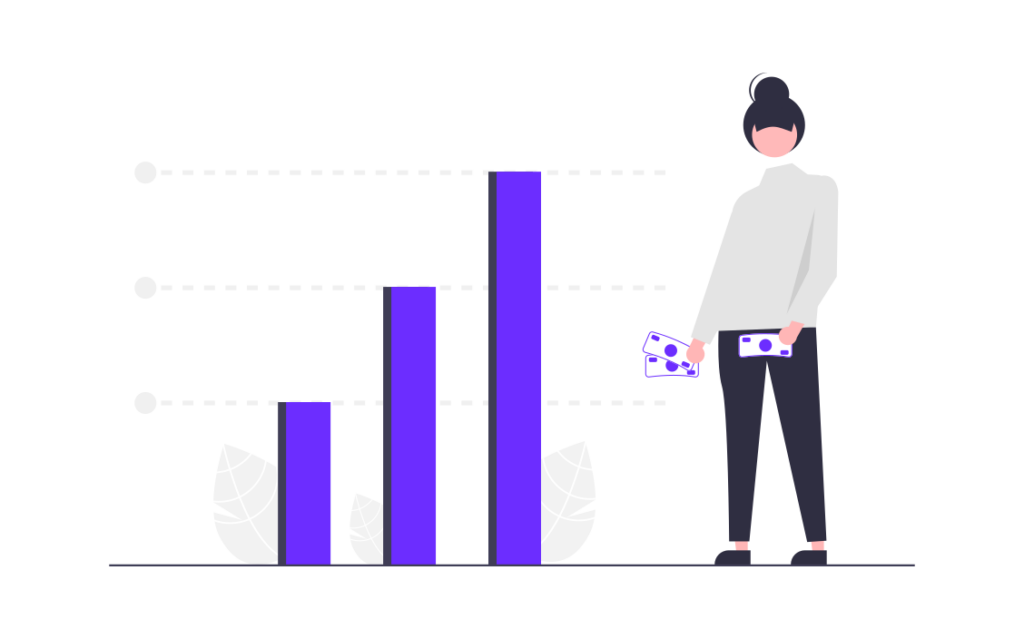Blogging can be more than just a hobby; it can be a profitable venture if you choose the right niche. Picking a niche that combines your interests with strong market demand is the key to success in niche blogging for profit. Whether it’s personal finance, health and wellness, or DIY projects, focusing on an area where you can provide valuable insights will attract a dedicated audience.
Starting a blog is straightforward, but to make it lucrative, I focus on creating high-quality content that meets the needs of my readers. Regular updates and engaging articles keep readers coming back and improve my blog’s visibility on search engines. Monetization strategies such as affiliate marketing, sponsored posts, and selling digital products are some of the ways I turn my passion into profits.
Effective marketing and promotion are essential to grow my blog’s audience. Utilizing social media platforms, email marketing, and SEO techniques help drive traffic to my site. As my blog grows, I continuously look for new opportunities to expand and reach more readers.
- Key Takeaways
- Understanding Niche Blogging
- Setting Up Your Blog
- Content Creation
- Monetizing Your Blog
- Marketing and Promotion
- Growth and Expansion
- Frequently Asked Questions
- How can I identify a profitable niche for blogging?
- What are some examples of successful niche blogs that generate income?
- Which blogging niches have low competition but high profitability potential?
- What strategies are most effective for monetizing a niche blog?
- How much revenue do niche bloggers typically earn?
- What steps should I take to start a niche blog and make it profitable?
Key Takeaways
- Choose a profitable niche that aligns with your interests.
- Create valuable and engaging content to attract and retain readers.
- Use various monetization and marketing strategies to grow and profit from your blog.
Understanding Niche Blogging
Niche blogging focuses on a specific topic to attract a dedicated audience. Identifying the right niche can make blogging profitable by targeting readers who are highly interested in the subject.
Identifying a niche for your blog starts with evaluating your passions and expertise. Ask yourself what topics you enjoy writing about and where your knowledge can add value. You might also consider if there’s an existing audience for this niche.
Another method is to brainstorm ideas. I usually set aside an hour to jot down at least 50 blog post ideas. This approach helps me gauge how sustainable and engaging the niche might be. Additionally, perform market research to see how competitive the niche is. Tools like Google Trends and keyword research can offer insights into what people are searching for, helping you make a data-driven decision.
Focusing on a niche allows you to build authority and trust within a specific community. Readers seeking information on that topic are more likely to discover your blog, fostering a loyal following.
Monetization also becomes easier. Whether through affiliate marketing, sponsored posts, or selling products, a niche audience often translates to higher engagement and conversion rates. For example, personal finance blogs can explore various income streams like promoting financial products or offering consultation services.
Moreover, niche blogs usually face less competition compared to general blogs. This makes it simpler to stand out and rank higher in search engine results. All of these advantages create a strong foundation for building a profitable blog.
Setting Up Your Blog

Getting your blog off the ground requires a few key steps. Selecting the right platform, carefully designing your blog, and using essential tools will set you up for success.
First, you need to pick a platform. I recommend using WordPress because it’s highly customizable and has a lot of features. Another good option is Elementor, which works well with WordPress to enhance design options.
For beginners, platforms like Wix or Blogger might be easier to use. They have drag-and-drop features that simplify the setup process.
Make sure the platform you choose offers good customer service and plenty of templates. Pricing is important too, so look for a plan that fits your budget while offering the features you need.
Next, think about the design of your blog. A clean, professional look attracts readers. Consider using themes that are responsive, meaning they look good on both desktops and mobile devices. Tools like Elementor make it easy to customize your design.
Ensure that your blog’s navigation is simple. Categories and tags help organize your content, making it easier for readers to find what they’re looking for. Use high-quality images, but don’t overdo it; too many graphics can slow down your site.
Also, make your blog accessible. This means using readable fonts, contrasting colors, and clear headings. These elements improve the user experience for all readers.
Finally, equip your blog with the right tools. Important plugins include Yoast SEO for optimizing search engine visibility, and Google Analytics for tracking your blog’s performance. These tools help you understand your audience and improve your content.
Monetization tools are crucial too. Consider affiliate marketing through programs like Amazon Associates or promoting your products. This can be integrated into platforms like Elementor.
If you plan to send newsletters, tools like Mailchimp are great for managing email lists. Social media management tools like Buffer can help schedule your posts and keep you engaged with your audience.
By focusing on these key areas, you’ll be well on your way to launching a successful blog.
Content Creation

When creating content for a niche blog, it’s crucial to develop a solid strategy, optimize for SEO, and ensure that the content is engaging. These three components help in building a loyal audience and driving consistent traffic.
A strong content strategy begins with knowing the audience. I focus on understanding their interests, challenges, and preferences. This helps me create content that resonates.
I use tools like Google Analytics and social media insights to gather data. This data helps me plan topics that will engage my niche.
Creating a content calendar keeps me organized. It ensures I cover all important topics and maintain consistency. Planning ahead makes it easier to stay on track and publish regularly.
SEO is essential for driving organic traffic. I start by doing keyword research using tools like Ahrefs or SEMrush. This helps me find keywords that people in my niche are searching for.
I make sure to include primary keywords in the title, meta description, headers, and throughout the content. This enhances the chances of ranking higher in search engines.
Creating high-quality backlinks is another important aspect of SEO. I reach out to other bloggers in my niche for guest posts and collaborations.
Creating engaging content involves more than just writing. I incorporate visuals such as images, infographics, and videos to make the content more appealing.
I also ensure my content is easy to read. Using short paragraphs, bullet points, and bold or italicized text highlights key points and keeps the reader’s attention.
Interactive elements like polls or quizzes can make the content more engaging. Asking questions and encouraging comments fosters a sense of community.
By focusing on these strategies, I make my content informative, interesting, and easy to find. This helps in building a strong, engaged audience for my niche blog.
Monetizing Your Blog

There are several effective ways to make money from your blog. Here are three key methods you can use to generate income: affiliate marketing, direct advertisements, and selling digital products.
Affiliate marketing is one of the most popular ways to monetize a blog. This involves promoting products or services from other companies on your blog. When your readers click on an affiliate link and make a purchase, you earn a commission. The key to success is to choose affiliates that align with your blog’s niche and audience.
I recommend signing up with trusted affiliate programs like Amazon Associates, ShareASale, or ClickBank. Amazon Associates is especially popular due to the vast number of products available on Amazon. It’s important to build trust with your audience and only promote products you believe in. Regularly updating and reviewing your affiliate links can help maximize your earnings.
Selling direct advertisements means you skip the middlemen like Google AdSense and work directly with brands. This can be more lucrative as you set your own rates for ad placements. There are various formats, including banner ads, sponsored posts, or product reviews.
To attract advertisers, create a Media Kit that showcases your blog’s traffic, audience demographics, and engagement rates. Clear, professional communication with potential advertisers is key. You might also offer exclusive ad spaces or packages to make your offers more attractive.
Creating and selling digital products is another profitable method. Digital products could include eBooks, online courses, printables, or exclusive content. This approach allows you to leverage your expertise and provide value to your audience.
Identify what your readers are most interested in or problems they face that you can solve. For example, if you run a fitness blog, you might sell workout plans or nutrition guides. Platforms like Gumroad or Teachable can help you manage sales and distribution. Developing a marketing strategy to promote these products through your blog and social media is essential for success.
Combining these monetization strategies can create multiple income streams and maximize your blog’s revenue potential.
Marketing and Promotion

To make a blog profitable, you need more than just great content. Effective marketing and promotion play crucial roles in attracting and retaining readers. I’m going to cover strategies for leveraging social media, email marketing, and networking with industry influencers.
I use social media to build awareness and drive traffic to my blog. I focus on creating engaging posts that encourage interactions like comments and shares. Each social media platform has its own strengths. For example, Instagram is great for visual content, while Twitter excels at driving quick updates and discussions.
By scheduling posts at peak times, I maximize my audience reach. I also join related groups and communities to share my blog posts, which helps increase visibility. Consistency and authenticity are key, and I make sure to interact with my followers by replying to comments and messages.
Email marketing is one of the most effective ways to connect with my audience. I start by building an email list using sign-up forms on my blog. I offer incentives like exclusive content or free resources to encourage sign-ups.
Once I have a list, I send regular newsletters featuring my latest blog posts, upcoming events, and special offers. I carefully craft subject lines to ensure high open rates and use personalization to make emails feel more relevant. I also analyze metrics like open rates and click-through rates to continuously improve my email campaigns.
Connecting with industry influencers can significantly boost my blog’s credibility and reach. I identify key figures in my niche and follow their content. I actively engage by commenting on their posts and sharing their content with my audience.
To build stronger relationships, I reach out via email or social media with collaboration proposals, like guest blog posts or joint webinars. These collaborations can introduce my blog to a wider audience. I also attend industry events and conferences to network in person, which helps in forming valuable connections and partnerships.
By focusing on these strategies, I effectively market and promote my blog to grow my audience and increase profitability.
Growth and Expansion

To make a blog more successful, I need to focus on analyzing its metrics and then scaling the business effectively. Clear tracking and strategic growth allow for better decision-making and improved profitability.
Understanding blog performance starts with data. I focus on key metrics like traffic, engagement, and conversion rates. Tools like Google Analytics help track these stats.
Traffic shows how many users visit my blog. I look for trends over time to see what’s working.
Engagement metrics, like average time on page and bounce rate, reveal how interested visitors are in my content.
Conversion rates tell me how successful my blog is at turning visitors into subscribers or customers. Setting up event tracking in Google Analytics helps measure specific actions, like form submissions or product purchases.
Using this data, I can identify weak points and areas for improvement. For instance, if my bounce rate is high, I might need to improve the relevance or design of my landing pages.
Scaling a blog involves increasing its reach and revenue potential. First, diversifying content keeps my audience engaged. I might add videos, podcasts, or even interactive tools to complement my articles.
Collaborations are another way to scale. By partnering with other bloggers or influencers, I can reach new audiences. Guest posting and co-hosted webinars are effective strategies.
Monetization strategies must be robust. This could mean exploring new revenue streams such as online courses, membership sites, or premium content.
Automation tools help manage growth. Email marketing services like Mailchimp automate subscriber engagement, saving time and increasing efficiency.
Ultimately, scaling sustainably involves balancing expansion with maintaining quality. This ensures long-term success and user satisfaction.
Frequently Asked Questions
I will answer some common questions about finding a profitable blogging niche, examples of successful blogs, and key strategies for monetization.
How can I identify a profitable niche for blogging?
To find a profitable niche, I look for topics that have a mix of high demand and low competition. I use tools like keyword planners to see search volumes and competition levels. This helps me focus on what readers are interested in but isn’t already saturated.
What are some examples of successful niche blogs that generate income?
Blogs about food and recipes often generate a lot of traffic. For example, Anastasia Blogger emphasizes that food blogs can easily attract visitors through platforms like Pinterest. Niche blogs focusing on financial advice or personal finance are also successful.
Which blogging niches have low competition but high profitability potential?
Blog niches like DIY crafts, eco-friendly living, and mental health offer high profitability with relatively low competition. These areas have dedicated audiences looking for specific information and resources, making them ripe for monetization opportunities like affiliate marketing and sponsored content.
What strategies are most effective for monetizing a niche blog?
I find that affiliate marketing, sponsored posts, and selling digital products are highly effective for monetizing a niche blog. Engaging with the audience through email lists and offering exclusive content also helps in generating a steady income stream. Additionally, focusing on SEO can drive more organic traffic.
How much revenue do niche bloggers typically earn?
Niche bloggers can earn anywhere from a few hundred dollars to several thousand dollars per month, depending on traffic and monetization strategies. Some bloggers make upwards of $10,000 a month by diversifying income sources like ad revenue, affiliate commissions, and selling products or services.
What steps should I take to start a niche blog and make it profitable?
First, I recommend choosing a specific niche that you are passionate about and that has audience demand. Set up your blog with a reliable hosting service and a user-friendly design. Create high-quality, valuable content consistently. Finally, promote your blog through social media and SEO to attract readers and monetize through various strategies.
